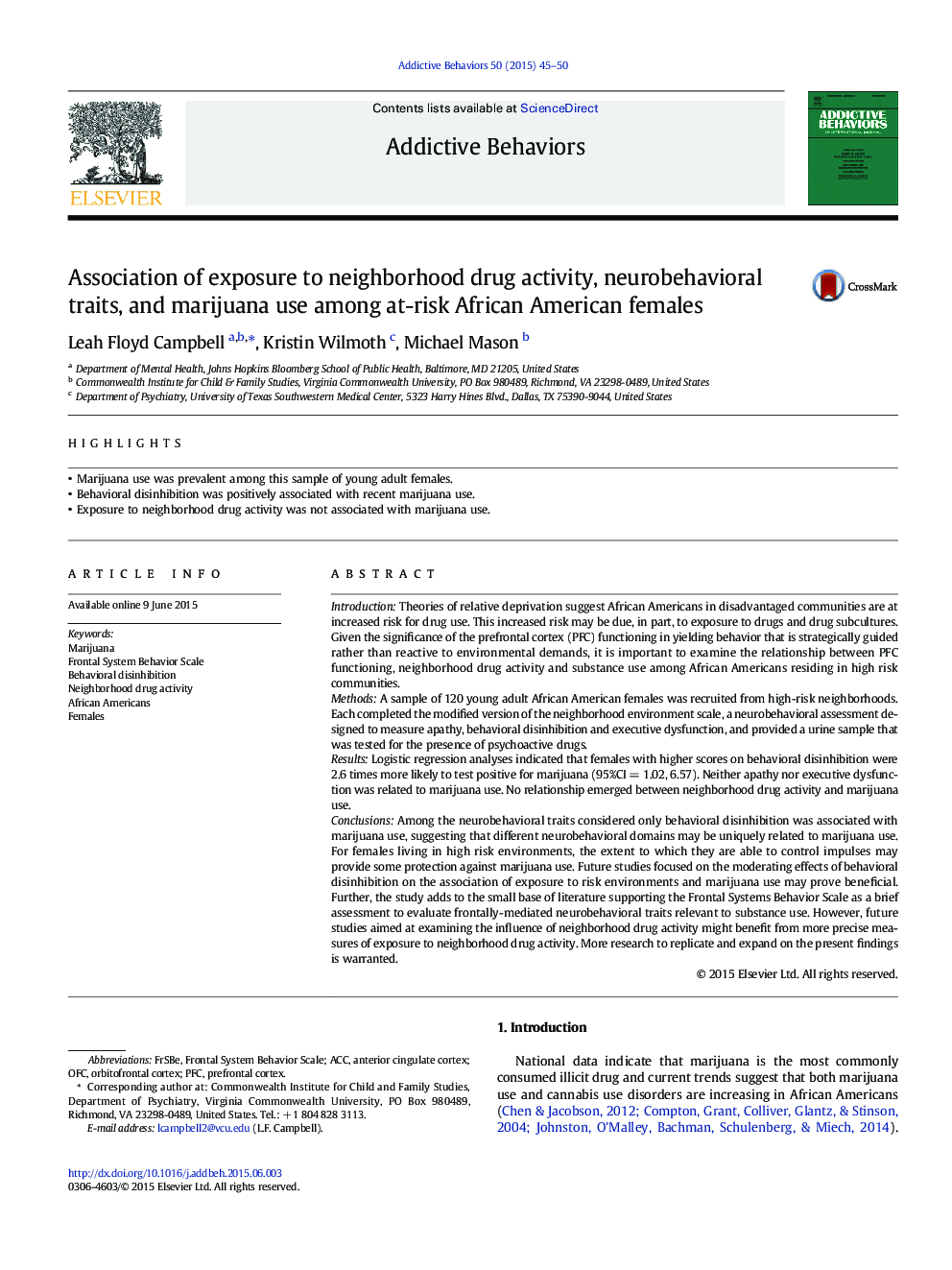| Article ID | Journal | Published Year | Pages | File Type |
|---|---|---|---|---|
| 898634 | Addictive Behaviors | 2015 | 6 Pages |
•Marijuana use was prevalent among this sample of young adult females.•Behavioral disinhibition was positively associated with recent marijuana use.•Exposure to neighborhood drug activity was not associated with marijuana use.
IntroductionTheories of relative deprivation suggest African Americans in disadvantaged communities are at increased risk for drug use. This increased risk may be due, in part, to exposure to drugs and drug subcultures. Given the significance of the prefrontal cortex (PFC) functioning in yielding behavior that is strategically guided rather than reactive to environmental demands, it is important to examine the relationship between PFC functioning, neighborhood drug activity and substance use among African Americans residing in high risk communities.MethodsA sample of 120 young adult African American females was recruited from high-risk neighborhoods. Each completed the modified version of the neighborhood environment scale, a neurobehavioral assessment designed to measure apathy, behavioral disinhibition and executive dysfunction, and provided a urine sample that was tested for the presence of psychoactive drugs.ResultsLogistic regression analyses indicated that females with higher scores on behavioral disinhibition were 2.6 times more likely to test positive for marijuana (95%CI = 1.02, 6.57). Neither apathy nor executive dysfunction was related to marijuana use. No relationship emerged between neighborhood drug activity and marijuana use.ConclusionsAmong the neurobehavioral traits considered only behavioral disinhibition was associated with marijuana use, suggesting that different neurobehavioral domains may be uniquely related to marijuana use. For females living in high risk environments, the extent to which they are able to control impulses may provide some protection against marijuana use. Future studies focused on the moderating effects of behavioral disinhibition on the association of exposure to risk environments and marijuana use may prove beneficial. Further, the study adds to the small base of literature supporting the Frontal Systems Behavior Scale as a brief assessment to evaluate frontally-mediated neurobehavioral traits relevant to substance use. However, future studies aimed at examining the influence of neighborhood drug activity might benefit from more precise measures of exposure to neighborhood drug activity. More research to replicate and expand on the present findings is warranted.
